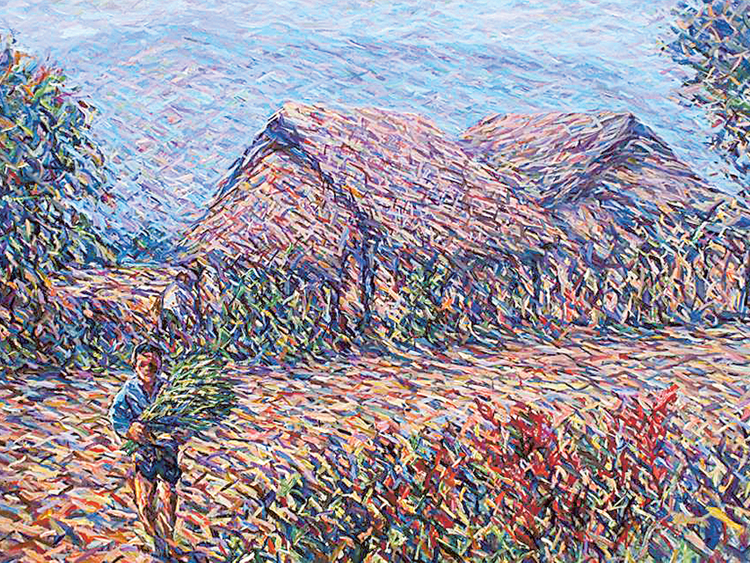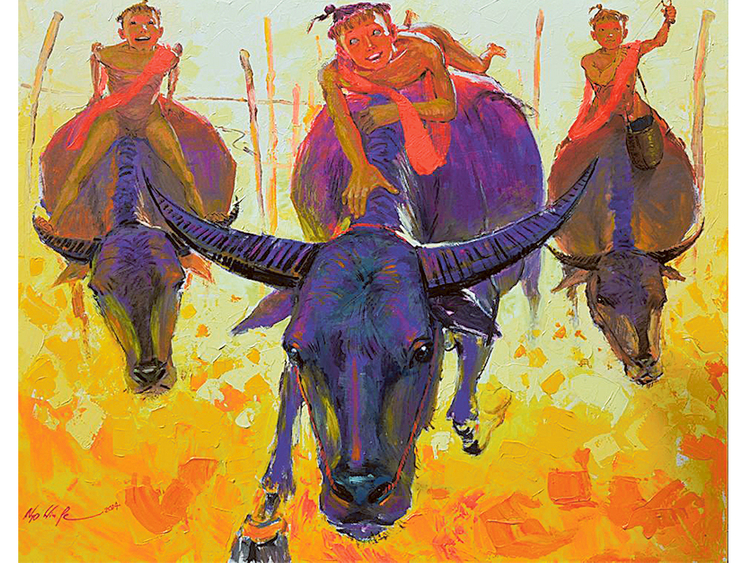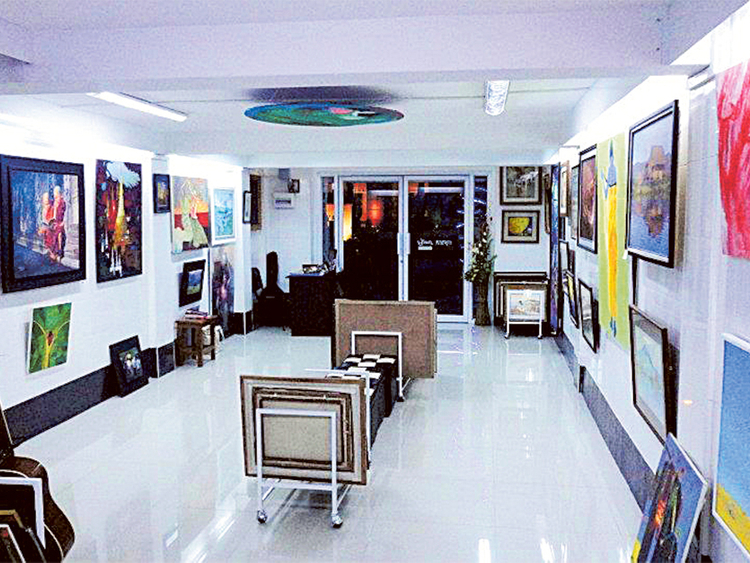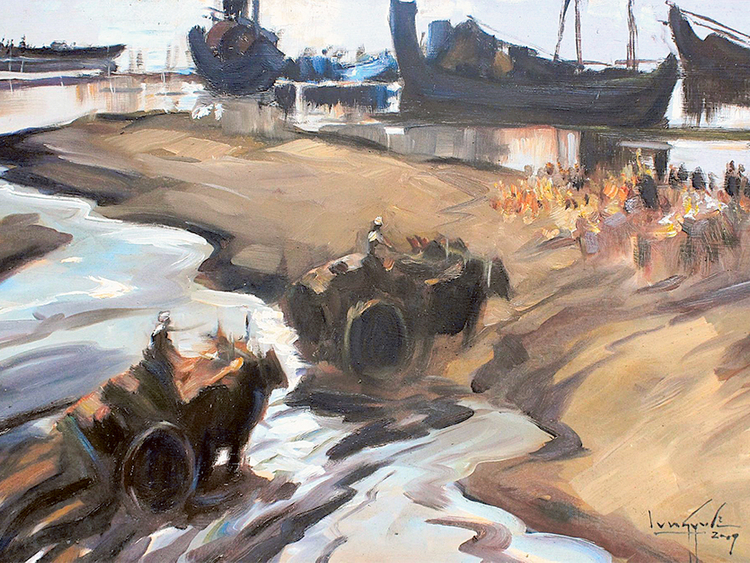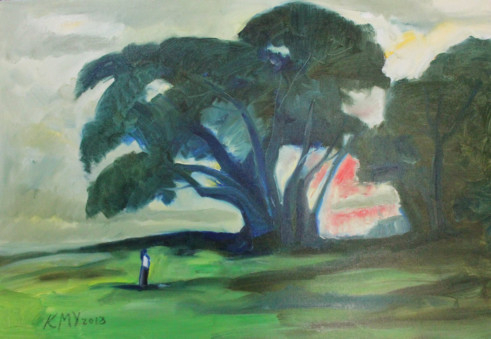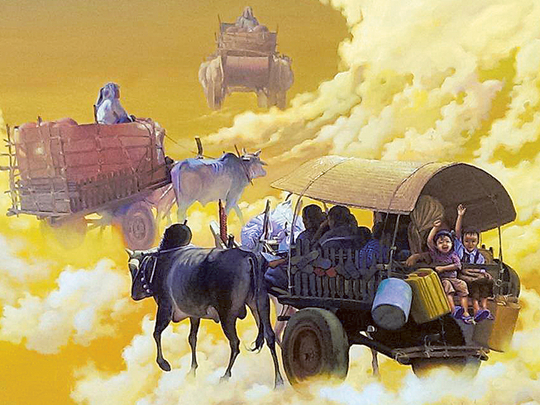
For art lovers, lifting of restrictions on Myanmar art took a long time coming. But when the military regime abolished the state censor board in 2012, one could say that the liberalisation in arts began in right earnest. There are less restrictions. Earlier, before any show, the gallery and the artists had to take approval from the board — thus effectively curbing the creativity inherent in art.
Myanmar artists, art promoters and galleries now have to deal with a globalised outside world, after decades of relative isolation. There was naturally great curiosity in art circles abroad about this new-found freedom and how it would be used by contemporary artists.
Last October, a show titled “Banned in Burma: Painting Under Censorship”, opened at two venues in Hong Kong. It was an eloquent testament to the resistance that artists had put up against a military regime that sought to silence the voice of the people.
The modernist pioneer of the 1970s, U Win Pe Nyint, had to emigrate to the United States during late 1980s, and was in self-exile, having been blacklisted by the regime. After the reform he was finally able to return to Yangon in 2013 and now at the height of his powers in his seventies is busy at work in his studio.
Having developed in isolation, Myanmar’s art exudes a charm of its own wherein traditional subjects — landscapes, village life and the icons of Buddhism — are transformed into something special.
Another effect of liberalisation was the flowering of the gallery scene, mostly based in Yangon, the main city of Myanmar. According to reports, there are more than 30 galleries in the city at present. The most famous and well-established is Law Ka Nat, which has been functioning for more than 40 years. The new galleries in the city, such as River Gallery, New Treasure Gallery, Pansodan Gallery, New Zero Art Space, Gallery 65 are lighting up the scene.
Artists are increasingly exploring experimental, conceptual art and new media. Many non-profit organisations have also been formed to boost art activity in the country. Overseas art shows are also being held more frequently.
River Gallery’s owner and curator Gill Pattison, in an interview with a local magazine, says that in many countries in the Asian neighbourhood, such as India, it was the “sizeable middle class with higher disposable income which drove the development of the market for modernist and contemporary art”.
She feels Myanmar “is not yet at that stage, but I believe will see a similar evolution here as the country develops, some of the Myanmar diaspora returns and local people improve their livelihood.”
Demand from the West
Any new wave on the international art scene does tend to stoke a newfound enthusiasm among overseas collectors. Myanmar art, until recently, was mostly seen and talked about in Hong Kong, Singapore, Malaysia and Thailand. The art flow from Myanmar to the West used to be traditionally via Hong Kong, Thailand or Singapore, but this too has largely changed since the country is now drawing more travellers and collectors are gaining access to the art galleries more directly compared to the past.
Experts say that due to lack of good representation, market prices for Myanmar art are undervalued. Many local dealers resorted to underhand dealing, exploiting the dire straits that artists found themselves in.
Rudimentary training
One of the major drawbacks as far as Myanmar art was concerned was the lack of modern art training facilities, with only two main government-run art schools, also based in Yangon, for the entire country. But things are expected to change soon with rising enthusiasm among local collectors and increased tourism as a result of the liberalisation.
The National University of Arts and Culture taught the traditional arts, dance and music. The academic training gave the students great skills to start with, but limited access to other resources. Art students study painting, sculpture and carving, traditional aesthetics, museum and conservation studies, and commercial art.
“The environment may not encourage enough young artists to experiment, question or research on internet since facilities may not be widely available. As a result, artists have had to build their own networks, both local and international, to supplant the lack of support and initiative by institutions,” says Dubai-based Kyaw Thu Tun, co-founder of Myanmar Ink Art Gallery.
“Making it additionally difficult for our artists were also the censorship rules and regulations limiting their creativity. With the opening up of the Myanmar economy, we can see a significant surge in creativity. With more resources, internet accessibility, and more art shows and performances by visiting artists from other countries, as well as the support from NGOs, there has been a positive change incorporating modern trends, resulting in greater creativity at the grassroots level.”
Main trends
The majority of artists from Myanmar are graduates from the National University of Arts and Culture but each of them has adopted a different style — ranging from Realism, Pop, Serial, Abstract to Expressionism, Impressionism, etc. “But the main undercurrent is Myanmar’s traditional and cultural background. With today’s crop I believe the trend is more towards contemporary art,” says Thu Tun.
Leading artists
“The first generation of leading modern artist was U Khin Maung Yin (1938-2014) who passed away but his works were well appreciated and valued by many art lovers. The other one is U Lun Gywe, an 84-year-old contemporary artist who is the most respected Impressionist in the country. He is considered the master of drawing in both realistic and contemporary styles. U Win Pe Myint is also famous from among the younger generation, while Min Wae Aung is one of the most successful and internationally recognised artists,” he says.
“Min Wae Aung’s traditionalised contemporary artworks are often exhibited in London, Singapore and other neighbouring countries in Southeast Asia.”
N.P. Krishna Kumar is a freelance writer based in Dubai.



